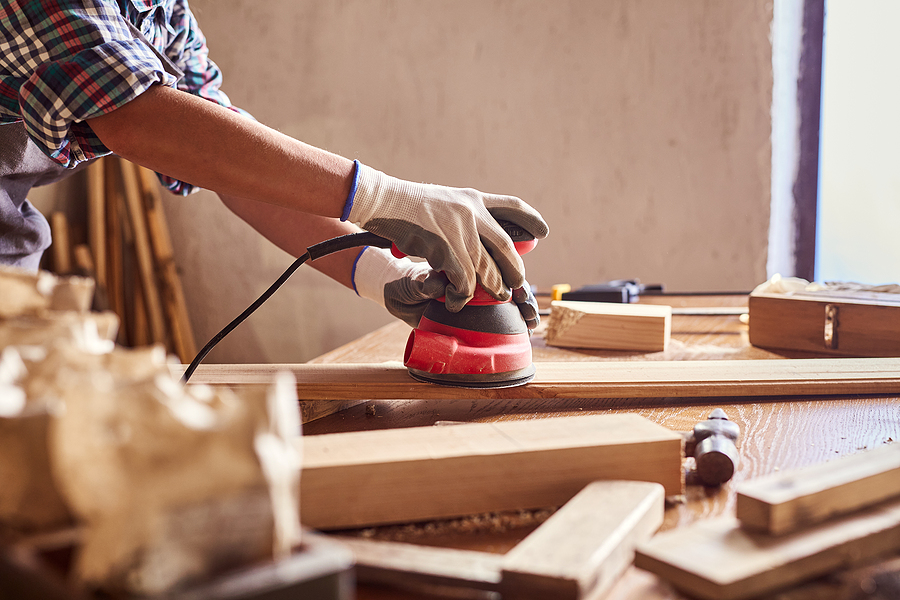Posted by Sandpaper America on Jun 30th 2023
The Benefits of Using an Electric vs. Manual Hand Sander
Sanding is a necessary part of many DIY projects and woodworking tasks. It can be tedious and time-consuming, but it’s also essential for achieving smooth, professional results. Fortunately, there are tools that make sanding easier and more efficient – electric sanders and manual hand sanders.
In this blog post, we will compare the benefits of using an electric sander vs. a manual hand sander so you can choose which one best fits your needs.We will discuss how each tool works as well as their pros and cons to help you decide which type of sander is right for your project. Let's get started!

Electric Sanders Versus Hand Sanders
A brief comparison of electric sanders and manual hand sanders will help you make the best decision for your project. Whether you are polishing antique metal furniture, sanding down wood, removing old paint, or refinishing a playset, having the right knowledge of your sanding options will make all the difference. You can purchase various make and model electric and manual sanders online or at your local retailer of choice. Home improvement stores and hardware stores will also have many options available.
Electric Sanders
Electric sanders are power tools, powered by either an electric cord or a battery. This type of sander uses an abrasive piece of material such as sandpaper or a grinding disc to quickly strip away layers of wood, paint, rust, and other materials. Electric sanders come in various sizes and styles – including palm sanders, belt sanders, random orbital sanders, and more – designed for different types of projects.
The main benefit of using an electric sander is that it typically performs the job much faster than a manual hand sander can. With their powerful motors and high-speed motion, electric sanders can quickly remove large amounts of material with minimal effort from the user. They also feature adjustable speed settings, allowing you to control how quickly or slowly the sanding is done. This feature can be especially helpful when working with delicate materials that require lighter sanding.
Manual Hand Sanders
Manual hand sanders are non-powered tools used for woodworking and other projects. These tools work by holding a piece of abrasive material (usually sandpaper) against the surface of the material being worked on. Unlike electric sanders, manual hand sanders require physical effort from the user in order to generate friction and remove material.
The primary benefit of using a manual hand sander is its precision. Because manual hand sanders require direct pressure from the user’s hand, they can provide more controlled results than electric sanders, which rely on their motor to generate friction. Manual sanders are also quieter than electric ones, making them a better option for indoor use or in noise-sensitive areas. Furthermore, manual hand sanders require no electricity or batteries, so they can be used anywhere and at any time.
The Choice is Yours - Manual Sanding or Electric Sanding
Ultimately, the choice between using an electric sander vs. a manual hand sander will depend on your project and personal preference. If you need to quickly remove large amounts of material from a surface, then an electric sander may be the better option for you. On the other hand, if you need precise results with minimal noise pollution, then a manual hand sander could be the way to go. Consider your needs carefully before selecting a sander – whichever one you choose, it should make your sanding job easier.
If you're in Indiana and searching for the highest quality belt sander abrasives, look no further. Call Sandpaper America to order high-quality sanding belts at affordable prices. We manufacture all of their sandpaper and abrasive products in-house, so you can trust their quality and dependability. We offer cloth x-weight belts, J-weight belts, zirconia belts, pump sleeves, and more!
Related Posts:
3
Portable Sanders You Want in Your Toolshed
How
to Take Care of Sanding Belts
Tips
for Using a Stationary Belt Sander

